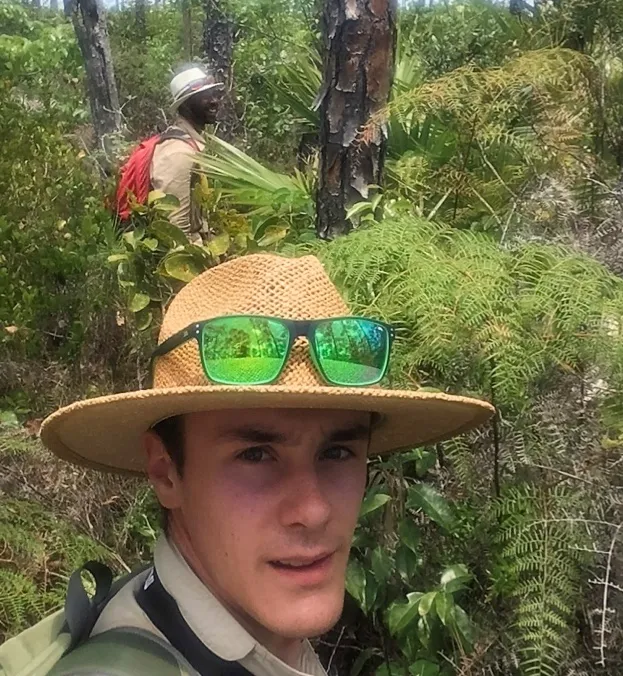University of East Anglia masters students Matthew Gardner and David Pereira set out on an exhausting search for the Bahama nuthatch, which has a long bill and distinctive high-pitched squeaky call.
The three-month long expedition covered a small area of native pine forest on Grand Bahama Island as the endangered nuthatch nest only in mature pine trees.
Owing to habitat loss from timber removal, and more recently hurricane damage, there has been a sharp decline in its population.
Figures suggest nuthatch population have plummeted from an estimated 1,800 in 2004 to just 23 being seen in a survey in 2007. After Hurricane Matthew, in 2016, there had not been any sightings.
Gardner recalls the expedition, “We were the first to undertake such an exhaustive search through 700km of forest on foot. We had been scouring the forest for about six weeks, and had almost lost hope.
“At that point we’d walked about 400km. Then, I suddenly heard its distinctive call and saw the unmistakable shape of a nuthatch descending towards me. I shouted with joy, I was ecstatic!”
You can watch footage captured by UEA students of the Bahama nuthatch:
These were encouraging sightings, but it was feared that there might only be two left – placing the species on the verge of extinction and certainly among the world’s most critically endangered birds.
Encouragingly in partnership with Nigel Collar and David Wege from Birdlife International and the Bahamas National Trust, the organisation that works to protect the habitats and species of The Bahama Islands, the UEA team made six Nuthatch sightings in total.
Parallel to this expedition a team of Bahamian students, led by Zeko McKenzie of Loma Linda University and supported by the American Bird Conservancy, independently made five sightings, using different methods, in the same small area of forest.
The Bahamian teams search included a sighting of what they believe to be two birds together. “In many cases when birds dwindle to such small numbers, any remaining birds are usually male,” Gardner says.
Dr Diana Bell, from UEA’s School of Biological Sciences, says: “Sadly, we think that the chances of bringing this bird back from the brink of extinction are very slim - due to the very low numbers left, and because we are not sure of the precise drivers for its decline.
“But it is still absolutely crucial that conservation efforts in the native Caribbean pine forest do not lapse as it is such an important habitat for other endemic birds including the Bahama Swallow, Bahama Warbler and Bahama Yellowthroat.”
The students’ quest made an impact with Ellsworth Weir, the Grand Bahama Parks Manager at the Bahamas National Trust, who says “Sadly, we realise now that we are faced with a very dire situation regarding the Bahama nuthatch. We wouldn't have realised the extent of the issue without the persistent efforts of David and Matthew.”

